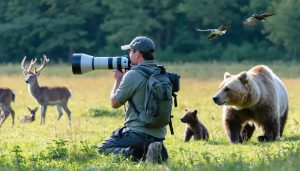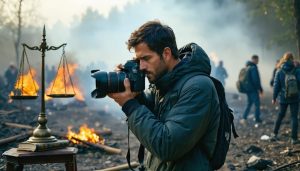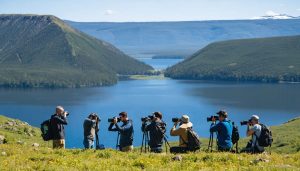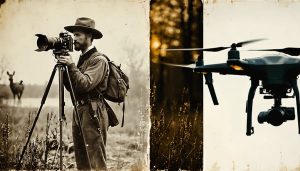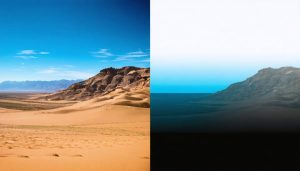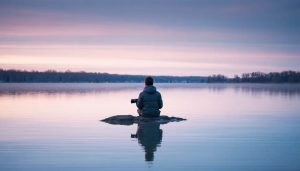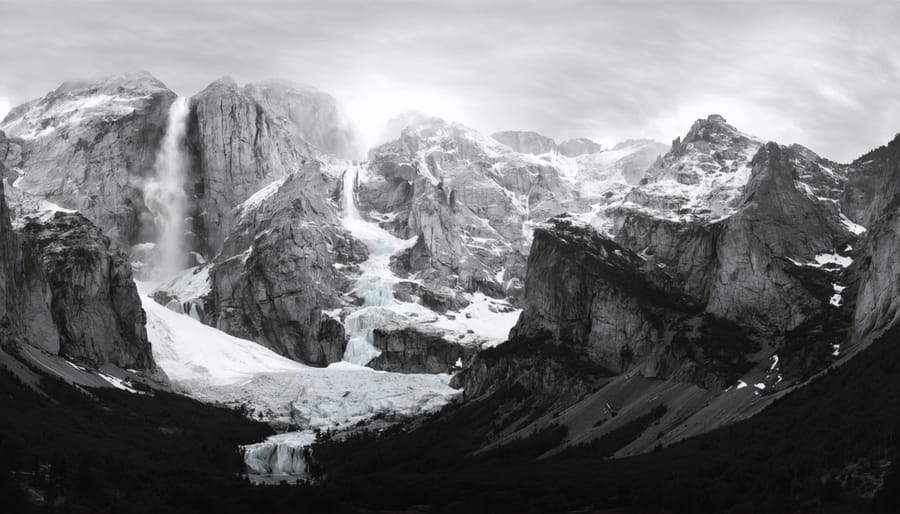
Through their lenses, environmental photographers have transformed how we see and understand our planet’s most pressing ecological challenges. From Ansel Adams’s striking black-and-white landscapes that sparked early conservation movements to James Balog’s time-lapse documentation of melting glaciers, these visual storytellers have wielded their cameras as powerful tools for change. Today’s leading practitioners of environmental photojournalism continue this legacy, combining technical mastery with unwavering dedication to document everything from disappearing rainforests to the impacts of climate change.
These photographers don’t just capture images; they spark movements, influence policy decisions, and permanently alter public consciousness about environmental issues. Their work represents a perfect fusion of artistic vision and scientific documentation, creating visual records that serve as both evidence and inspiration. Whether photographing endangered species in remote corners of the Earth or revealing the hidden beauty in urban ecosystems, these environmental photographers have mastered the delicate balance between aesthetic appeal and documentary truth, proving that powerful images can indeed change the world.
Pioneers Who Shaped Conservation Photography
Ansel Adams: America’s Wilderness Guardian
Few photographers have shaped America’s environmental consciousness quite like Ansel Adams. Through his masterful black-and-white landscapes, Adams didn’t just capture the majesty of America’s wilderness – he helped preserve it for future generations. His commitment to both artistic excellence and ethical documentation practices set new standards for environmental photography.
Adams’ signature style emerged from his deep connection to Yosemite National Park, where he first visited as a teenager. His dramatic photographs of Half Dome, El Capitan, and the High Sierra weren’t just aesthetic triumphs – they became powerful tools in the conservation movement. Working with the Sierra Club, Adams used his images to advocate for the protection of wilderness areas and the expansion of the National Park System.
What set Adams apart was his technical mastery combined with an artist’s eye. He developed the Zone System, a sophisticated approach to exposure and development that allowed him to capture the full range of tones in his landscape photographs. This technique helped him translate what he saw – from the deepest shadows to the brightest highlights – into breathtaking prints that conveyed the emotional impact of standing before these natural wonders.
His most famous works, like “Monolith, The Face of Half Dome” (1927) and “Clearing Winter Storm” (1944), demonstrate how black-and-white photography can reveal nature’s essence in ways color sometimes cannot. Adams showed that by stripping away color, the fundamental forms, textures, and emotions of a landscape become more apparent.
Beyond his artistic achievements, Adams testified before Congress, wrote passionate letters to presidents and legislators, and worked tirelessly to promote environmental conservation. His photographs continue to inspire new generations of environmental photographers and serve as a reminder of photography’s power to protect our natural heritage.
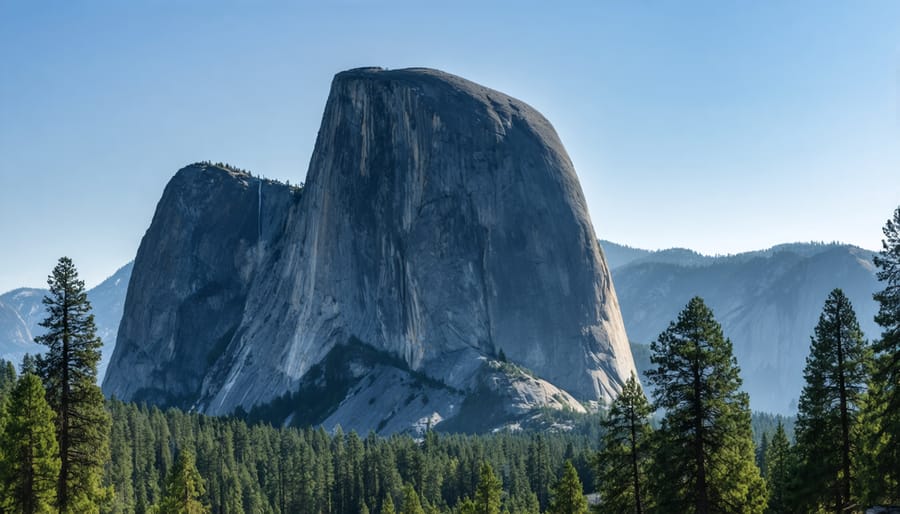
Carleton Watkins: The First Environmental Advocate
In the annals of environmental photography, Carleton Watkins stands as a pioneering figure whose work transcended mere artistic expression to become a powerful tool for conservation. Working in the 1860s with cumbersome wet-plate collodion equipment and mammoth glass plates measuring 18×22 inches, Watkins captured the first comprehensive photographic record of Yosemite Valley’s majestic landscapes.
What set Watkins apart wasn’t just his technical prowess but his ability to frame nature’s grandeur in a way that resonated deeply with viewers. His photographs of Yosemite’s towering cliffs, ancient sequoias, and pristine valleys were more than just documentation – they were a revelation to the American public, most of whom had never seen such spectacular wilderness.
The impact of Watkins’ work reached far beyond the art world. His photographs made their way to Washington D.C., where they profoundly influenced Congress and President Abraham Lincoln. These images played a crucial role in the passage of the Yosemite Grant Act of 1864, a groundbreaking piece of legislation that protected Yosemite Valley and the Mariposa Grove of Giant Sequoias from development. This marked the first time the U.S. government set aside land specifically for preservation and public use, laying the groundwork for the national park system.
Watkins’ approach to landscape photography was revolutionary for its time. Rather than depicting nature as threatening or needing to be tamed, his images presented wilderness as something sublime and worthy of preservation. His careful composition and attention to detail created photographs that balanced artistic beauty with scientific accuracy, making them valuable both as works of art and as documentation of America’s natural heritage.
Despite losing most of his work in the 1906 San Francisco earthquake and fire, Watkins’ legacy endures through his surviving photographs and their lasting impact on environmental conservation. His work demonstrates how photography can serve as a powerful advocate for environmental protection, inspiring viewers to appreciate and preserve the natural world.
Modern Masters of Environmental Photography
Sebastião Salgado: Documenting Earth’s Recovery
Brazilian photographer Sebastião Salgado has masterfully demonstrated how photography as a force for change can extend beyond capturing images to actively restoring our planet’s ecosystems. His monumental Genesis project, spanning eight years and 32 countries, showcases Earth’s remaining pristine landscapes, wildlife, and indigenous peoples, serving as both a celebration of nature’s resilience and a stark reminder of what we stand to lose.
What sets Salgado apart isn’t just his breathtaking black-and-white photography but his practical commitment to environmental restoration. In 1998, he and his wife Lélia founded Instituto Terra, transforming his family’s deforested cattle ranch in Brazil’s Atlantic Forest into a thriving nature reserve. Through their efforts, they’ve planted over 2.5 million trees and restored a complete rainforest ecosystem where there was once only barren land.
The Genesis project emerged from this personal journey of environmental restoration. Using his Leica cameras and favoring natural light, Salgado captured everything from Antarctic penguins to the indigenous tribes of the Amazon. His distinctive high-contrast style and careful composition bring drama and dignity to every subject, whether it’s a weathered mountain face or a gathering of walruses on Arctic ice.
Technical photographers will appreciate Salgado’s masterful use of perspective and scale in his environmental work. He often positions his camera to emphasize the vastness of landscapes, making human figures appear small within nature’s grandeur. This technique not only creates visually striking images but also communicates a powerful message about humanity’s relationship with the natural world.
Through his work, Salgado reminds us that environmental photography isn’t just about documenting destruction – it’s about inspiring hope and action. His images show us both the beauty we must preserve and the potential for recovery when we commit to restoration efforts. The success of Instituto Terra stands as living proof that photographers can move beyond documentation to become active participants in environmental renewal.
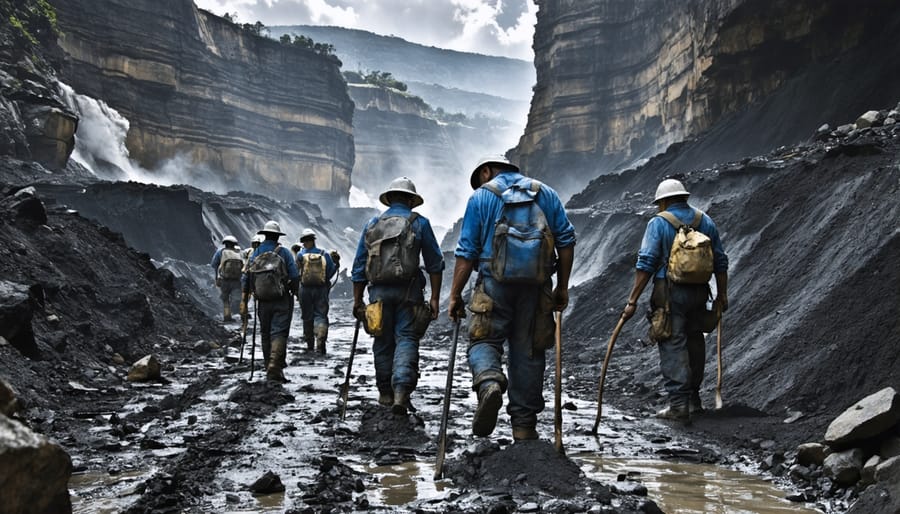
James Balog: Capturing Climate Change
Few photographers have captured the dramatic effects of climate change as powerfully as James Balog. Through his groundbreaking Extreme Ice Survey (EIS) project, launched in 2007, Balog revolutionized the way we visualize and understand glacial retreat. His innovative approach to documenting environmental challenges combines artistic vision with scientific rigor, using time-lapse photography to compress years of glacial movement into seconds of video.
The EIS project initially deployed 25 cameras across the Arctic, programming them to take one photo every daylight hour for three years. These cameras, specially modified to withstand extreme conditions, captured over one million images that revealed the unprecedented pace of glacial melting. The technical challenges were immense – from protecting equipment against -40°F temperatures to developing custom power systems that could operate through months of darkness.
Balog’s work gained widespread recognition through the award-winning documentary “Chasing Ice” (2012), which showcased not only the stunning imagery but also the photographer’s personal transformation from climate skeptic to one of its most compelling visual chroniclers. His time-lapse sequences, showing massive glaciers receding by miles over just a few years, created an immediate emotional connection with viewers that raw data could never achieve.
What sets Balog’s photography apart is his ability to combine aesthetic beauty with scientific documentation. His images of ice formations aren’t just records of retreat; they’re carefully composed artwork that celebrates the intricate patterns and ethereal beauty of these disappearing landscapes. Using everything from wide-angle vistas to macro photography of ice crystals, he creates a complete portrait of Earth’s changing cryosphere.
Today, the Extreme Ice Survey continues to expand, with cameras monitoring glaciers across multiple continents, creating an invaluable visual record of our planet’s transformation in the face of climate change.
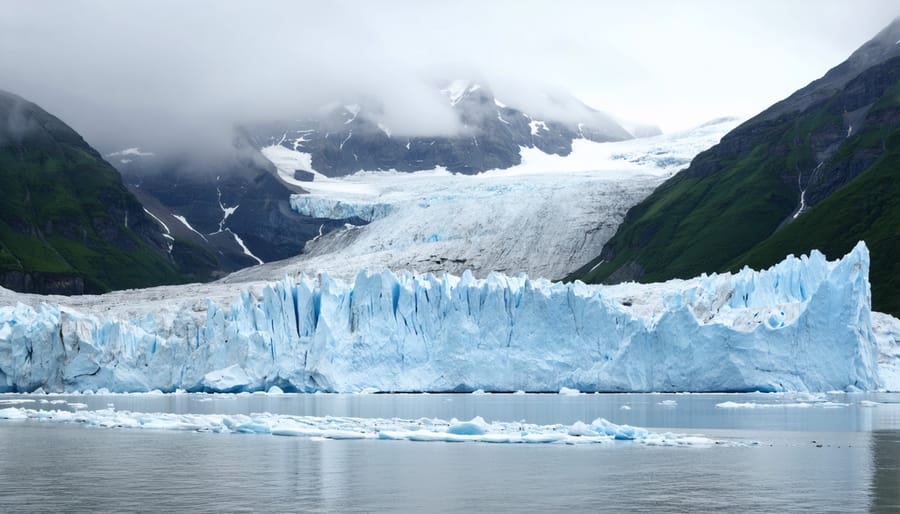
Paul Nicklen: Voice of the Polar Regions
Paul Nicklen stands as one of the most influential voices documenting the dramatic changes occurring in Earth’s polar regions. As a National Geographic photographer with over 20 years of experience, his intimate understanding of Arctic and Antarctic ecosystems stems from his unique upbringing in an Inuit community on Baffin Island, Canada.
What sets Nicklen apart is his ability to capture both the raw beauty and stark vulnerability of polar environments. His signature underwater photography technique involves spending hours in freezing waters to document marine mammals like leopard seals, narwhals, and polar bears in their natural habitat. This dedication has resulted in some of the most compelling visual evidence of climate change’s impact on Arctic ecosystems.
One of his most famous series chronicles the hunting behavior of a leopard seal who, rather than attacking him, attempted to feed him penguins – a remarkable encounter that demonstrated both the complexity of animal behavior and the importance of patient observation in wildlife photography. The images not only garnered millions of views but also helped change public perception about these misunderstood predators.
Nicklen co-founded SeaLegacy, an organization that uses powerful visual storytelling to drive conservation efforts. His work frequently highlights the relationship between sea ice loss and wildlife survival, particularly focusing on species like polar bears and walruses whose hunting grounds are literally melting away.
His technical approach combines fast prime lenses for low-light conditions with weatherproof camera housings designed to withstand extreme temperatures. But beyond the equipment, it’s Nicklen’s storytelling ability that makes his work so impactful. Each image serves as a window into the rapidly changing polar ecosystems, making distant environmental issues feel immediate and personal to viewers worldwide.
Through his lens, Nicklen continues to advocate for these remote regions, creating visual narratives that connect audiences to the urgent need for climate action and conservation of our planet’s polar heritage.
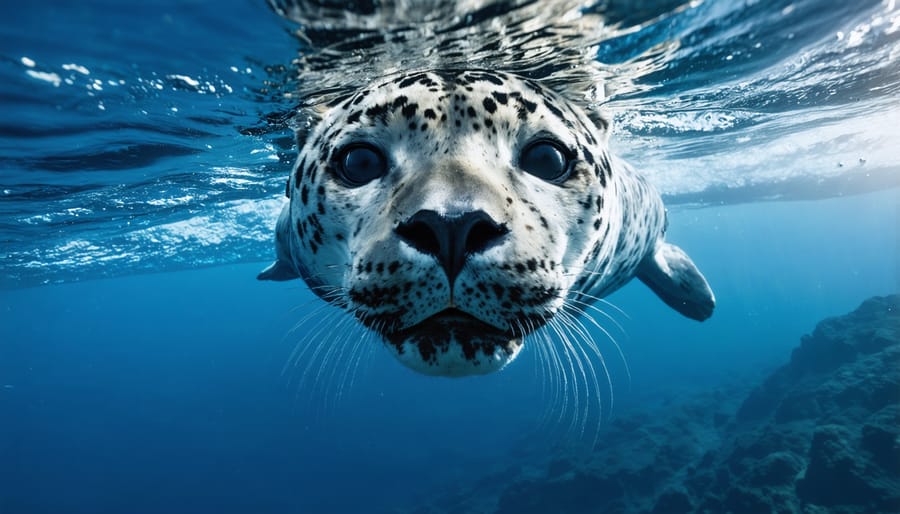
Technical Evolution and Equipment
The evolution of environmental photography equipment mirrors the remarkable journey of the photographers who wielded these tools. In the early days, pioneers like Ansel Adams relied on large-format cameras and black-and-white film to capture nature’s grandeur. Adams’s preferred tool was the 8×10 view camera, which, while cumbersome, delivered unprecedented detail and tonal range that helped establish his zone system.
As technology progressed, photographers like Frans Lanting embraced medium-format systems like the Hasselblad, striking a balance between image quality and portability. These cameras proved invaluable for documenting wildlife and remote locations, though they still required careful planning and precise technique.
The digital revolution marked a significant turning point. Contemporary environmental photographers like Paul Nicklen have embraced weather-sealed DSLRs and mirrorless cameras, allowing them to capture images in extreme conditions. Nicklen often uses the Nikon D6 with specialized underwater housings to document marine ecosystems, while others like Cristina Mittermeier prefer Sony’s mirrorless systems for their lightweight build and silent shooting capabilities.
Modern environmental photography has also seen the rise of drone technology, enabling photographers like Edward Burtynsky to capture aerial perspectives of human impact on landscapes. This technological advancement has opened new possibilities for documenting environmental issues, though it comes with important ethical considerations in photography, particularly regarding wildlife disturbance and protected areas.
Beyond cameras, environmental photographers have embraced specialized equipment like camera traps, which allow for non-invasive wildlife documentation. Photographers like Michael “Nick” Nichols pioneered these techniques, using remote triggers and weatherproof housings to capture intimate moments in nature without human presence.
Lens technology has also evolved significantly. While wide-angle lenses remain crucial for landscape work, super-telephoto lenses with improved image stabilization have become essential tools for wildlife photographers. The development of better weather sealing and more robust construction has allowed photographers to work in increasingly challenging conditions, from rainforests to arctic environments.
Post-processing tools have become equally important, with photographers using specialized software to process RAW files and maintain accurate color representation. Many modern environmental photographers emphasize minimal manipulation to maintain authenticity while still utilizing technology to overcome challenging lighting conditions and capture nature’s true essence.
The legacy of these pioneering environmental photographers continues to shape how we view and interact with the natural world today. Their groundbreaking work has not only documented critical environmental issues but has also inspired generations of photographers to use their cameras as tools for conservation and awareness.
Modern environmental photography owes much to these visionaries who helped establish the fundamental techniques and approaches still used today. Their images have become powerful catalysts for change, influencing environmental policy, conservation efforts, and public awareness on a global scale. From Ansel Adams’s masterful compositions that helped preserve America’s wilderness to James Balog’s time-lapse documentation of melting glaciers, these photographers have shown us both the beauty we stand to lose and the devastating impact of human activity on our planet.
The digital age has amplified their influence, allowing their work to reach broader audiences than ever before. Social media platforms and online galleries have become new venues for environmental storytelling, carrying forward the tradition these pioneers established. Today’s environmental photographers build upon their foundations, combining traditional techniques with modern technology to create even more compelling visual narratives.
As we face unprecedented environmental challenges, the role of environmental photography becomes increasingly crucial. These influential photographers have shown us that a single image can spark movements, change perspectives, and inspire action. Their enduring impact reminds us that photography isn’t just about capturing moments – it’s about creating lasting change and protecting our planet for future generations.
The work of these photographers continues to educate, inspire, and move people to action, proving that the power of environmental photography to shape our world remains as relevant today as ever.

